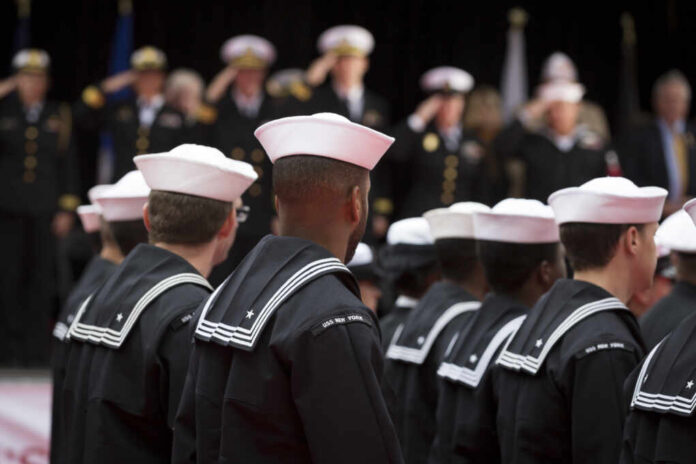
A WWI submarine that sank over a century ago with 19 sailors aboard has been discovered in remarkable condition off the California coast, offering a rare glimpse into America’s naval history.
At a Glance
- The USS F-1 submarine, lost in a 1917 training accident, was found nearly intact off the coast of San Diego
- The submarine collided with its sister vessel USS F-3 in a fog bank during performance testing
- 19 of the 24 crew members perished when the vessel sank
- Advanced underwater technology including the submersible “Alvin” captured high-definition images of the wreck
- A remembrance ceremony was held honoring the fallen sailors, with a bell rung 19 times
Historic Discovery Brings Closure
An interdisciplinary team led by the Woods Hole Oceanographic Institution (WHOI) has documented the final resting place of the USS F-1, a submarine that sank in 1917 following a collision with another U.S. submarine. The vessel was initially located in 1976 by a Navy deep submersible vehicle, but this recent expedition provided the most detailed survey and images of the wreck to date. The submarine lies on its starboard side with its bow pointing northwest, remarkably well-preserved after more than a century underwater.
The expedition team used a human-piloted vehicle named Alvin and a remote underwater vehicle called Sentry to conduct detailed surveys of the wreck site. These advanced tools allowed researchers to create precise photogrammetric models measuring both the submarine and surrounding marine life. Sonar systems aboard the research vessel Atlantis helped map the seafloor in preparation for the close-up exploration.
⚜️Ziggy’s Treasure Quest⚜️
📰Information Alert🚨While on our tour of the Cayman Islands, our guides intrigued us with stories of sunken ships, hidden treasure, and the eerie beauty of shipwrecks resting just beneath the waves. These tales weren’t just folklore—they were real,… pic.twitter.com/kM0zR5H2p7
— GlobalCryptoExplorer (@Globalcryptex) May 12, 2025
A Tragic Training Accident
The USS F-1 was conducting a 48-hour engineering run and performance test traveling between San Pedro and San Diego when disaster struck. The submarine collided with its sister vessel USS F-3 in thick fog, causing catastrophic damage. Only five crew members managed to escape as the submarine quickly sank. Lt. Dave Magyar, who examined the wreck, noted that “It looked like a big ax had hit her,” describing the devastating impact of the collision.
“USS F-1 was conducting a 48-hour engineering run and performance test traveling from San Pedro and San Diego, CA, when the accident occurred.”, said Bradley Krueger.
Researchers confirmed that the submarine will remain undisturbed on the ocean floor out of respect for the 19 sailors who perished. The site is considered a war grave and is protected by U.S. law. During the expedition, participants held a solemn remembrance ceremony, ringing a bell 19 times to honor each lost sailor – a poignant tribute to the brave men who made the ultimate sacrifice in service to our nation.
Advanced Technology Reveals History
The expedition showcased the remarkable capabilities of modern ocean exploration technology. The Alvin submersible captured detailed still and video images of the wreck, which researchers used to create comprehensive 3D models using photogrammetry. This non-invasive approach allowed for thorough documentation while preserving the site’s integrity and showing proper respect for those lost in the tragedy.
“As a Navy veteran, making this dive—together with another Navy veteran and a Navy historian—was a solemn privilege.”, stated Rob Sparrock.
The mission also surveyed a nearby aircraft wreck – a Grumman TBF Avenger torpedo bomber that crashed in 1950 during training exercises. Unlike the submarine tragedy, the aircraft’s crew survived the crash. The bomber bore the number “13” on its fuselage, referring to its training squadron – an ironically superstitious detail. This additional survey helped update Navy records on both historically significant wrecks.
Preserving Naval Heritage
The project exemplified successful collaboration between multiple organizations, including the Office of Naval Research, University-National Oceanographic Laboratory System, Naval History and Heritage Command, and WHOI. This partnership highlighted America’s ongoing commitment to honoring our military history and preserving important artifacts of our naval heritage for future generations to learn from and remember.
“Although Alvin and Sentry are critical for revealing deep-sea geologic hazards and studying remote ecosystems, they also offer opportunities to train the next generation of scientists and uncover crucial moments from our nation’s history.”, said Lisa Clough.
Beyond documenting these historical sites, the expedition provided valuable training opportunities for future deep-sea explorers and scientists. The mission demonstrated how cutting-edge technology can be applied to both scientific research and historical preservation, ensuring that America’s maritime legacy continues to be documented and honored appropriately while training the next generation of ocean explorers.

























